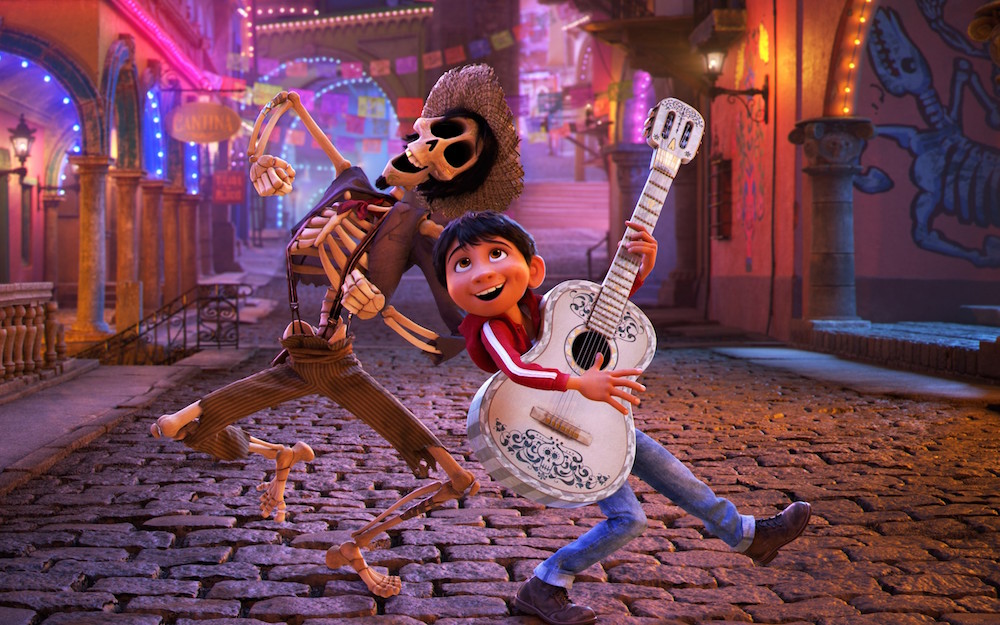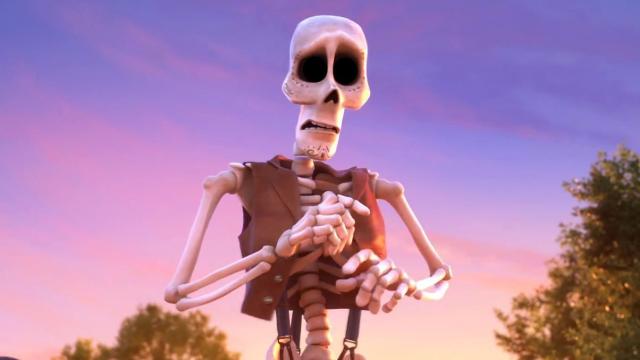When it came to making the Land of the Dead skeletons for the upcoming Disney film Coco, Pixar had a unique challenge on its hands. Since so much of animation is about ooey-gooey humans, how do you build characters stripped of their flesh, muscle and organs without terrifying an audience of kids? By making two little exceptions to the rule.
All Images: Disney (with one minor change)
Skeletons can be tricky to make kid-friendly, but it isn’t something Disney properties are a stranger to. There was Jack Skellington in The Nightmare Before Christmas, and you have the four dancing skeletons in Walt Disney’s first Silly Symphony short, The Skeleton Dance, all the way back in 1929. But this time around, it wasn’t just one character or a five-minute short film – it was over half the cast, sharing a good portion of the screen time. So, how did they make sure the sea of skeletons didn’t frighten away the audience? Coco director Lee Unkrich told Entertainment Weekly they had to do one thing you normally don’t see on long-dead corpses: Fill their sockets with large, emotive eyes.
“You don’t typically see skeletons with eyes, but it was important because without them they’re just blank slates,” Unkrich said. “It’s clichéd, but the eyes are the window to the soul, and I knew if I was going to have tender, soulful moments with these characters, I needed the audience to be able to look right into them.”

“Ready to have fun, kid?!”
Unkrich said they also made the eye sockets move and stretch to simulate eyebrows, something Pixar previously did in Finding Nemo with many of the fish characters, in order to make them more Disney-like. But apart from that, the design team tried to stay true to how skeletons actually look and feel. They didn’t give them “living” features that would make audiences uncomfortable, such as gums, tongues or a separate mandible jaw. But they did have to find ways to set the skeletons apart from one another, while still keeping them looking natural, which was a challenge in and of itself. Supervising animator Gini Santos said they did this in two ways: By subtly altering the colouring and cracking of bones between characters to create variety, and giving them unique movement styles that would set each of them apart.
The movement styles were partially thanks to what the animators did with bone density, creating a model with almost half the weight of a normal human skeleton. This lighter weight enabled them to experiment with fun reactions such as having popping joints, jiggling ribs, and even having characters fall apart and have their bones pulled back together. It was definitely a challenge, one that Pixar may never have to deal with again. But, as Santos put it, there was a great deal of fun and freedom in working with something so familiar and yet fundamentally different.
“Over the year we’ve spent so much time and research figuring out our human characters and how their skin squashes and stretches, so this totally broke the rules for us,” Santos said. “We knew with skeletons that all of a sudden, those boundaries of something organic are gone – the skin, the muscles, the tendons. And if there’s nothing holding it together, what can you do with bones? And we realised, we can do all sorts of things.”
